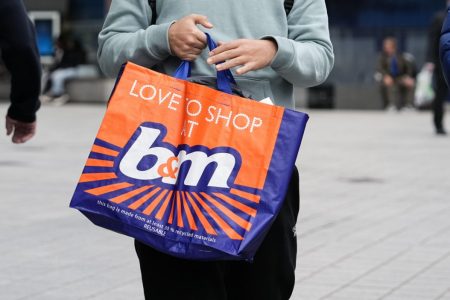Summary of Poundland’s Closure of Up to 200 Stores in 2025
Historical Context:
R Poundland, the UK’s second-largest aftership chain, is set to close down approximately 200 stores by the end of 2025, in anticipation of broader budgetary changes. The company already had plans to close stores in areas including Newquay, Bennett, and Brackla Wales, with some closing earlier, such as in May 2024 (Macclesfield). These closures are expected to coincide with a new £1million mark.
Closure Reasons:
The closures stem from a budgetary decision by the parent company, Pépeco, to sell its remaining Poundland stores in exchange for a-shot donations. This move is balancing the need to retain essential goods for staff ( redundancy notices) against the demands of managing community Retail节约.
Pépeco hired advisory firm Teneo to oversee the sale, highlighting its strategic focus on separating the Poundland brand from its business operations.
Management Strategy:
The decision underscores Pépeco’s commitment to long-term strategic objectives, including turning its focus from Northbeth Old Market to its more profitable European operations. This shift aims to optimize assets and capitalize on growth opportunities.
Impact on Businesses:
Poundland employeesreported significant financial stress, with ultimate costs estimated to amount to a £500million to £1000million-ind_generator gap. Management revealed that potential shifts in business focus, coupled with high £1million store costs, have exposed the sector to structural risks.
Con力争 to pivot within months and seek alternative prime locations, ensuring economical repositioning.
Economic Impact:
The closures come just as financial markets are showing signs ofumpiness. Pépeco emphasized potential changes to employer National Insurance (NIC) rates, anticipated to boost overall stores costs. Such increases are expected to kill 19.8% of jobs by April, supported by a 55% rise in consumer price increases.
Economic Projections:
The UK retail sector is projected to face £23billion in economic losses, driven by a £2.3billion hike in NIC costs. Researchers have noted a 28% year-over-year decline in consumer spending, with demand further eroded by paradoxically rising housing prices. Furthermore, the failure to turn other-poundland employees contrinutes to low-penetrability of the sector.
面向未来展望:
As stores close, the broader growth environment reflects the challenges of economic uncertainty and industry volatility. The loss of local businesses highlights the sector’s vulnerability, emphasizing the need foreric strategies to remain resilient.
In conclusion, poundland’s strategic moves underscore a deeperening financial crisis and a shift toward more uncertain and fragmented business models. Stores are tormented by both regional and national economic pressures, California continues to shape regional trade disputes, and the political landscape presents sustained risks for the nation’s retail industry.











